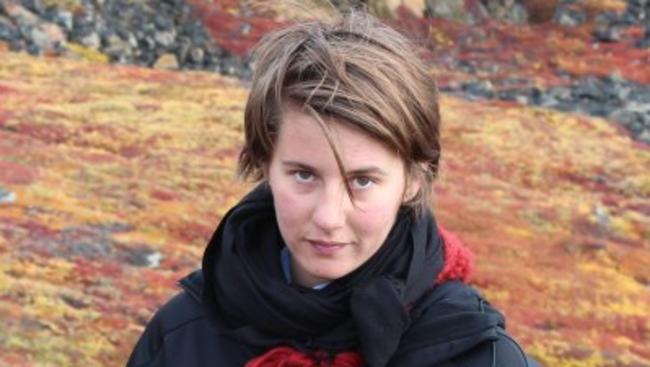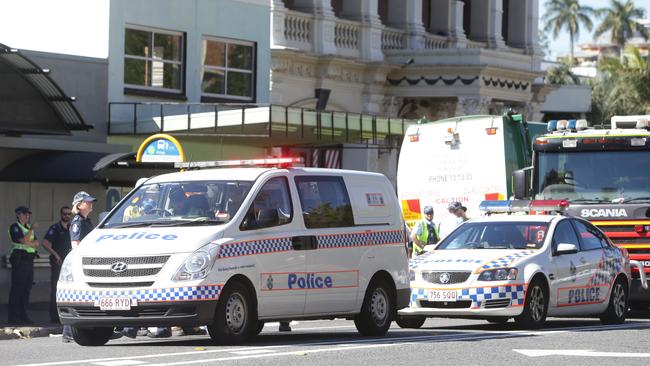Coroner pushes for improved safety for cyclists after inquest into Danish cyclist Rebekka Meyer’s death
REBEKKA Meyer was cycling to uni just like she did every other morning when she lost her life in a “horrific and meaningless” way.

REBEKKA Meyer was cycling to uni just like she did every other morning when she lost her life.
The 22-year-old from Denmark was an exchange student at University of Queensland and an confident cyclist, having mastered her technique from a very early age on the streets of her native Copenhagen.
But as a coroner investigating her death noted, the cycling experience in Brisbane was “very different” to what she was used to back home.
Ms Meyer was struck from behind when she was attempting to turn right through a notoriously congested T-intersection at Woolloongabba during the busy morning peak hour on September 11, 2014. She died instantly.
Coroner Christine Clements handed down her findings into Ms Meyer’s “sudden, unexpected and shockingly traumatic and tragic” death yesterday, the same day a 25-year-old cyclist from Sydney was killed after being struck by a car.
The driver of the truck that hit Ms Meyers told the coronial inquest he could not see 7m ahead of him from the wheel of his truck, and he did not see Ms Meyer until after his truck had hit her.
The coroner found the bull bar of the truck, which was towing a dog trailer, hit the rear tyre of Ms Meyer’s bicycle, causing her to fall beneath the truck, where she was run over by the trailer’s tyres.
But she found there was insufficient evidence to determine how and when Ms Meyers came to be in front of the truck, and that while there were many witnesses to the accident, “this has not resulted in a clear picture of precisely what sequence of events occurred”.
“It could not be determined whether when the truck driver approached the intersection Ms Meyer was already ahead of the truck in the same lane, or whether Ms Meyer passed the truck leading up to the intersection and positioned the bicycle in front of the truck before commencing the right hand turn,” she said.

In handing down her findings, Ms Clements recommended heavy vehicles be banned from roads unless they were fitted with appropriate technologies that would warn the driver of road users within the truck’s blind spot.
It was among eight recommendations that also included a preference for recorded over handwritten eye witness testimonies by police, improvements to the bicycle path near Stanley St and Annerley Rd, where Ms Meyer was killed, and installation of CCTV at that intersection.
Ms Clements also recommended Brisbane City Council build more exclusive cycleways across the city and seriously consider technologically-triggered bike boxes at intersections, that would give cyclists a clear head start over other road users.
She noted that Brisbane council had initially dismissed that technology because of its negative impact on traffic flow, but she said there was proof it worked.
“The advantage to cyclists would be to maximise their visibility to other traffic and provide them with time to make their way across an intersection ahead of other traffic,” she said.
“Anecdotal observation of buses using such head start technology throughout Brisbane city does not suggest that traffic grinds to a halt because of this initiative.”
She said further investigation was needed into smarter technology to trigger the light change only when a bicycle was in the box.
Ms Meyer’s death came just 13 months after Brisbane rider Leslie Karayan was killed when an overside truck hit the Annerley Rd rail bridge.
In June the council announced a new trial of peak-hour-dedicated bicycle lanes on the busy road, which is used by about 600 cyclists daily.
The coroner said she hoped to see more improvements.
“Ms Meyer’s family might one day return to Brisbane. It is to be hoped that if they do, they will be able to see some positive improvements in safety for the cycling public,” she said.
Members of Ms Meyer’s family flew to Brisbane from Denmark for the inquest, paying tribute to a young woman who had a passion for anthropology, music, nature and people.
But they were also vocal about the need for more to be done to prevent similar tragedies in the future.
“For us, this will always be horrific and meaningless but maybe ... something can be done to prevent another accident another time, whether it’s to look at biking lanes or extra lines, physical barriers and also the trucks that are on the road,” Ms Meyer’s sister Tania Jensen told brisbanetimes.com.au.
“Turn every stone, check every corner.”




